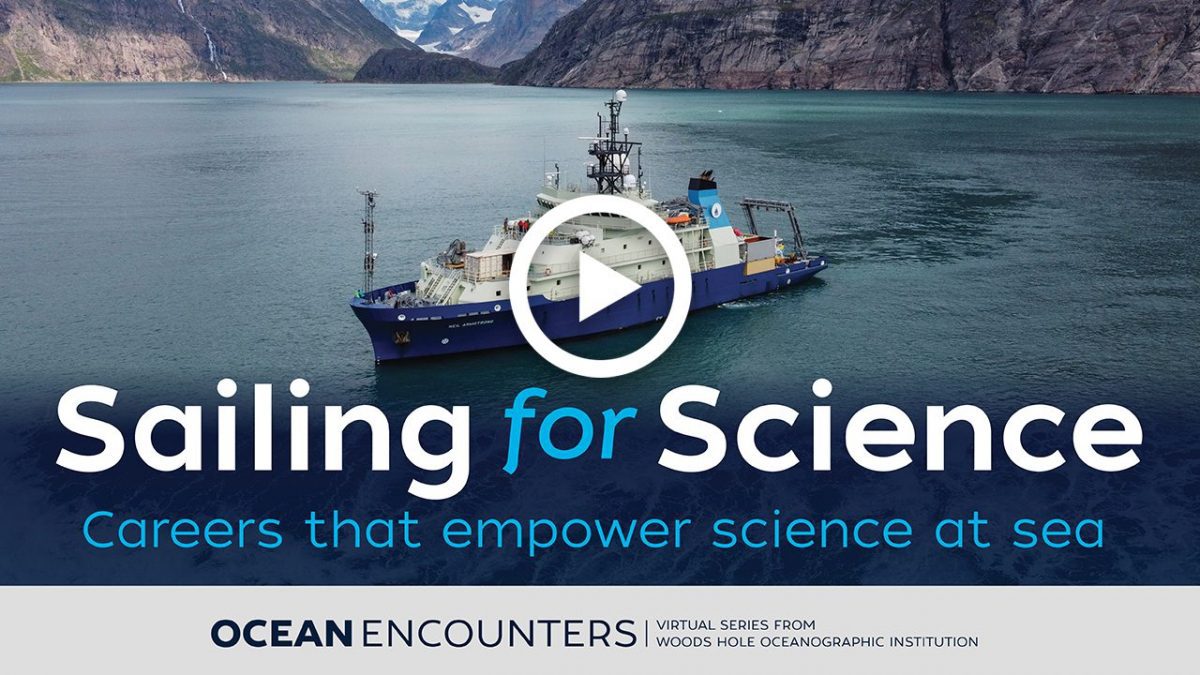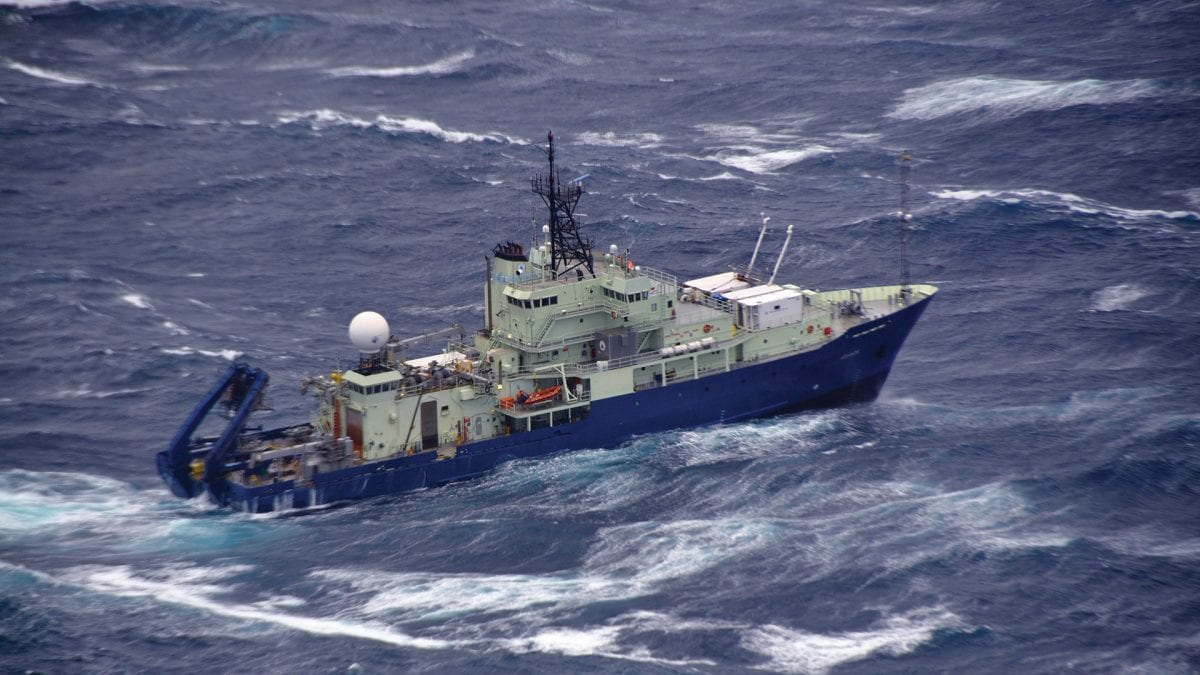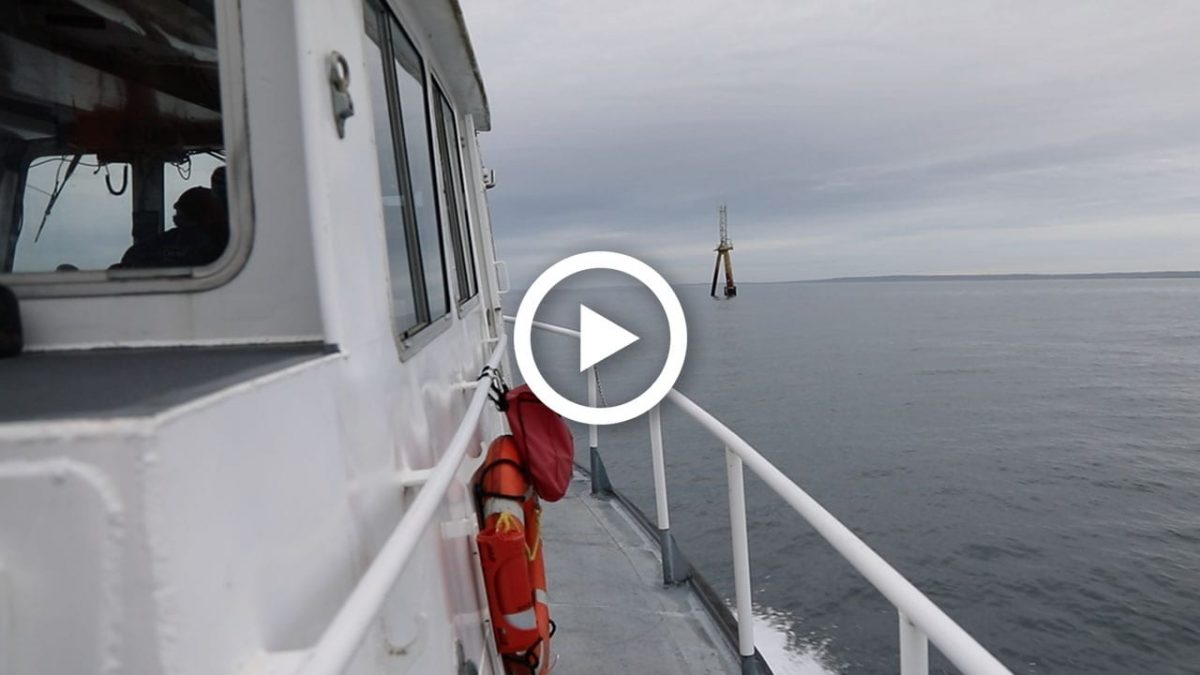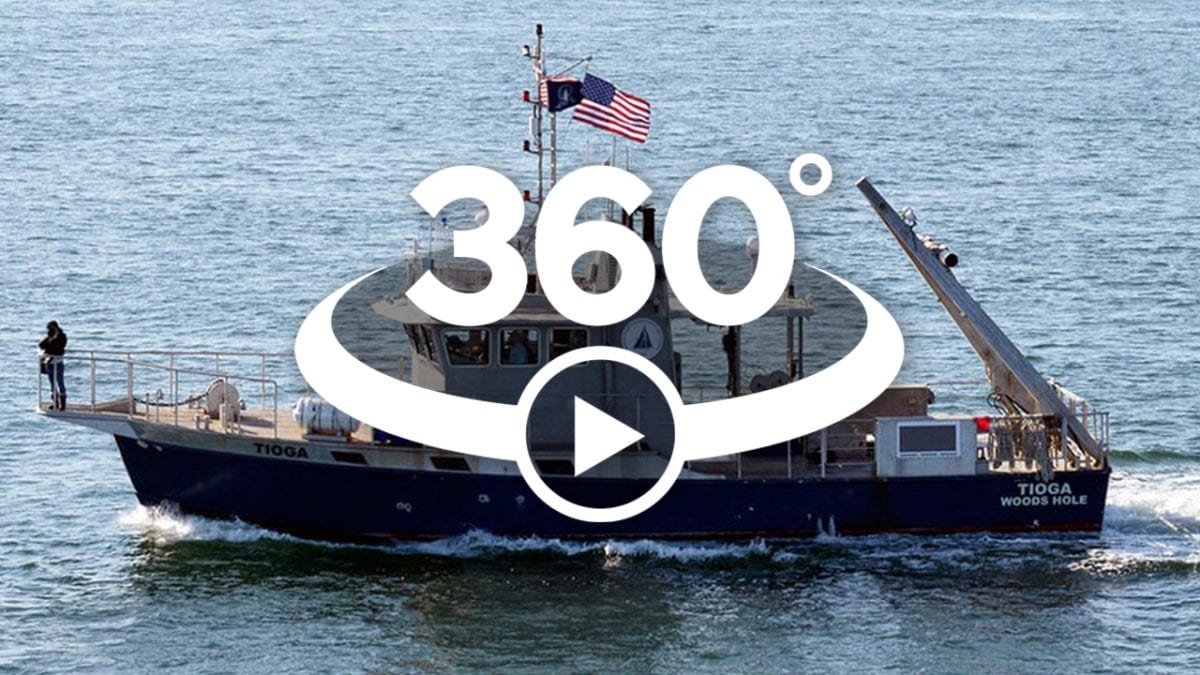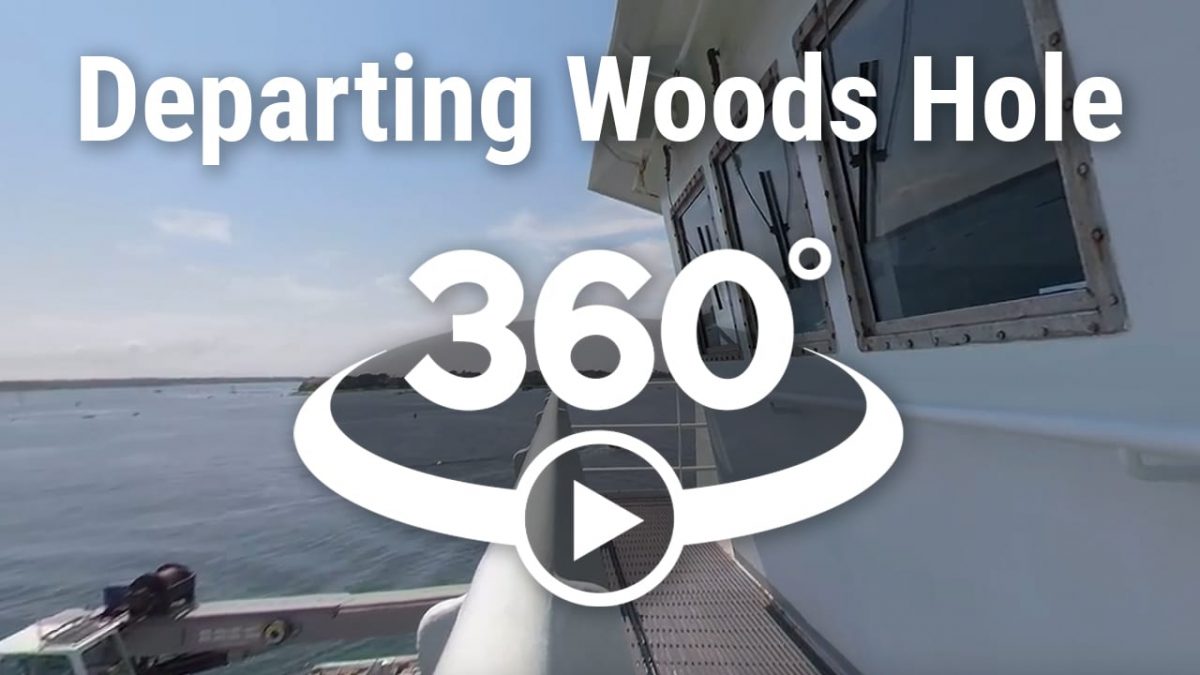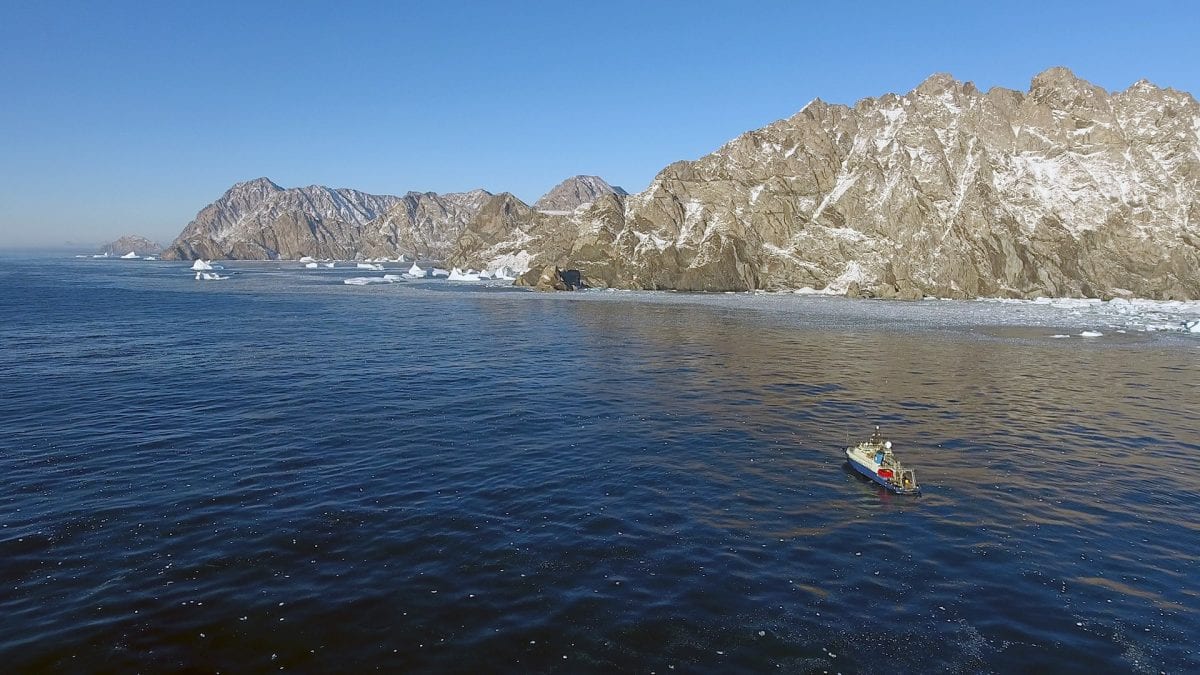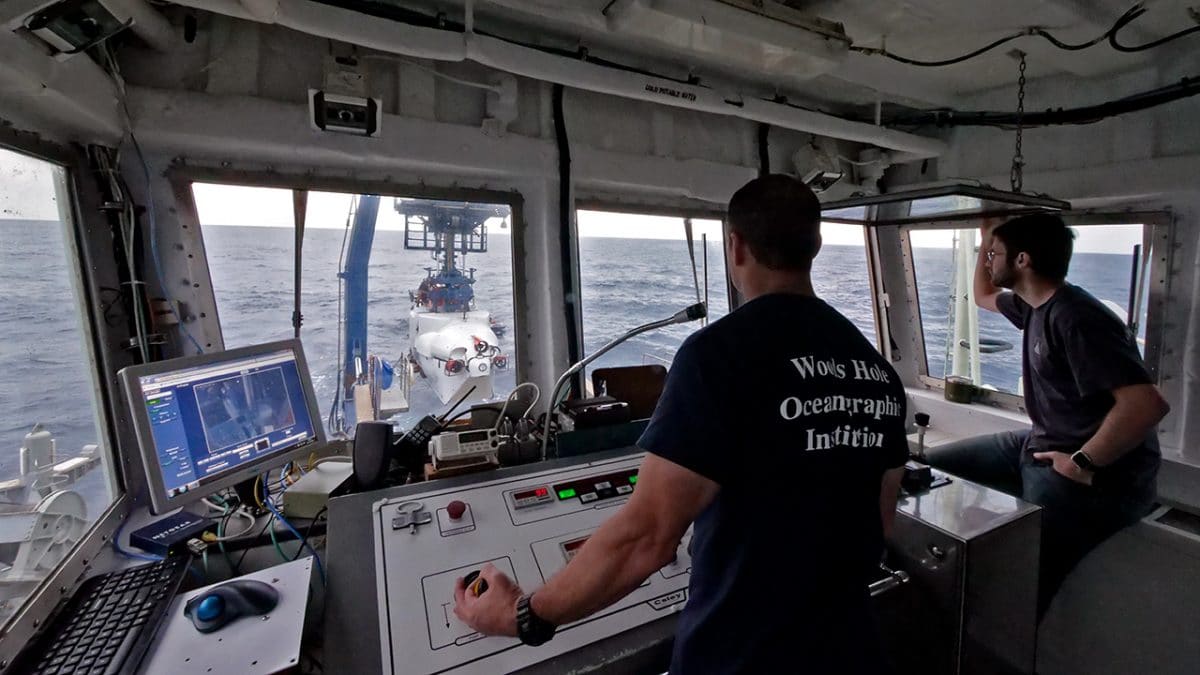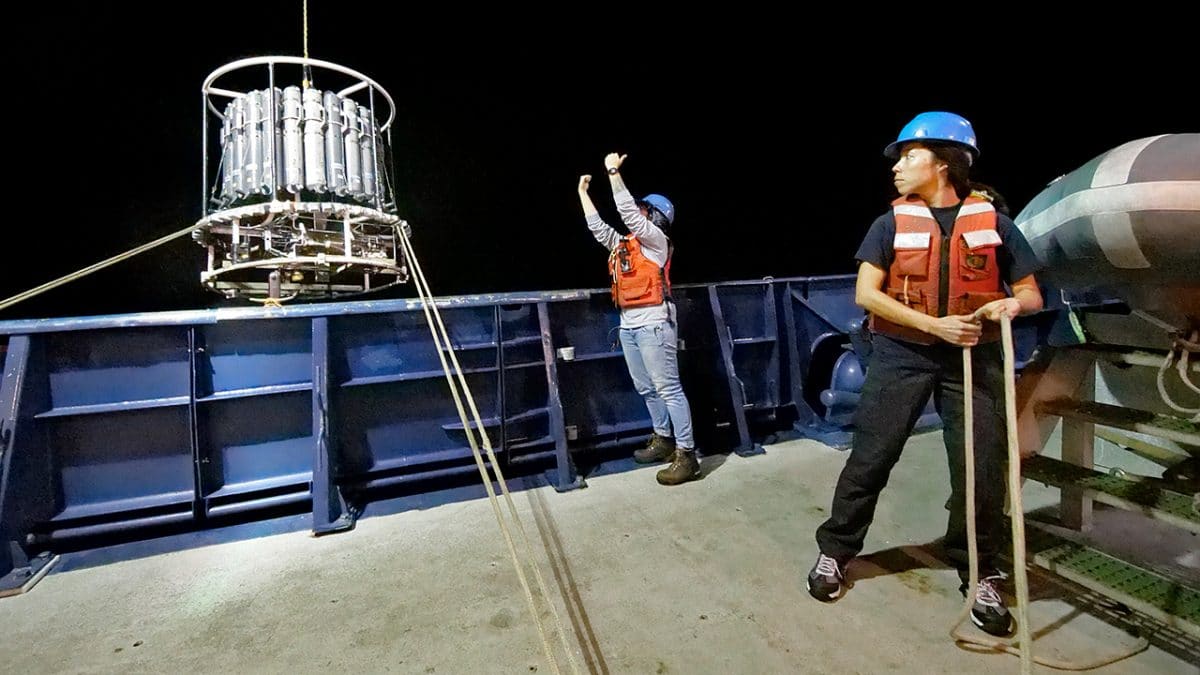In this section
Ocean Topics
- Climate & Weather
- How the Ocean Works
- Ocean & Human Lives
- Ocean Life
- Sustainable Ocean
- Ocean Tech
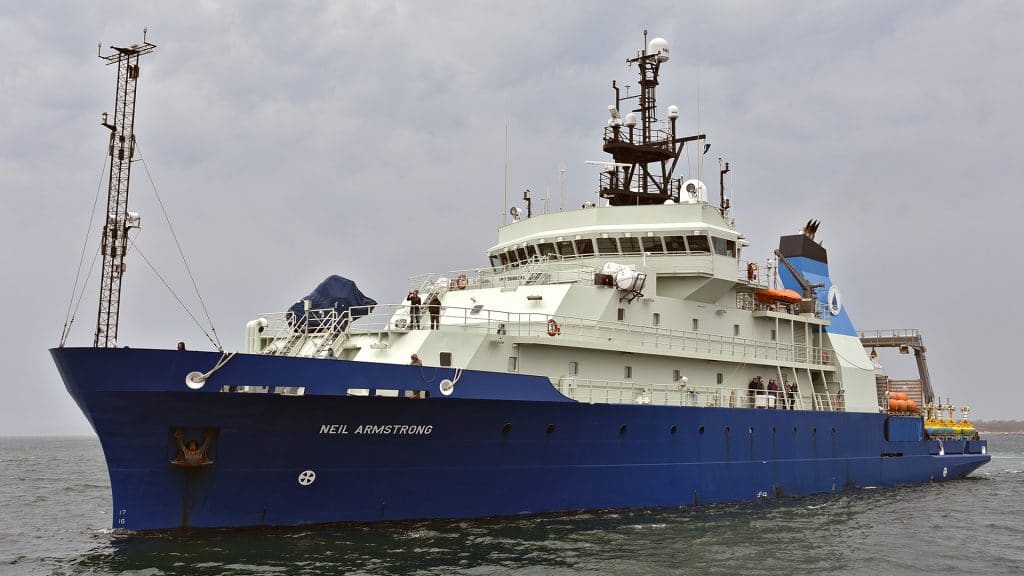
In 2016, the research vessel Neil Armstrong replaced R/V Knorr, which the Institution has operated since 1970. Named for the American hero whose "small step" provided humanity with a new perspective on our planet, this vessel will carry on its namesake’s legacy of exploration. (Veronique LaCapra, Woods Hole Oceanographic Institution)
Researchers rely on sophisticated ships to get a firsthand look at the ocean environment and to carry their tools and instruments into it.
Articles Related to Ships
From Oceanus Magazine
Five marine animals that call shipwrecks home
Go with the flow
Adapt or retreat:
Gift enables new investments in ocean technologies
Students Get Their Sea Legs
Illuminating the Ocean with Sound
The Quest for the Moho
Remembering Knorr
Our Ship Comes In
News Releases
Innovative partnerships advancing ocean observations
Deepest sediment core collected in the Atlantic Ocean
WHOI & Pangaea Logistics Solutions to advance ocean science data acquisition through Science RoCS program
WHOI engineers invent adjustable, compact marine winch, offering flexibility and improved vessel operations
Newest Navy Research Vessel Is Named Neil Armstrong
WHOI Statement on the R/V Atlantis Rescue at Sea of 93 Egyptians
WHOI Hosts Tours of the Research Vessel Knorr
WHOI Selected to Operate Newest Navy Research Ship
News & Insights
Gift enables new investments in ocean technologies
Working from Home: Dante Cusolito
WHOI Honors the 50th Anniversary of the Moonwalk
WHOI in the News
Coast Guard, Woods Hole researchers rescue 13 from sinking vessel off Virginia coast
Coast Guard Cutter Polar Star completes 12-week deployment in Bering Strait region
Seattle-based Coast Guard icebreaker returns home after first mission in nearly 40 years to wintertime Arctic
UVM commissions $3.9 million hybrid electric/diesel vessel for Lake Champlain research
35 Years Ago: STS-51J – First Flight of Space Shuttle Atlantis
Atlantis getting ‘midlife fitting’ at Dakota Creek
WHOI vessel tapped for Argentine sub search
Allied Marine Crane Outfits R/V Neil Armstrong
Ocean Tech Features
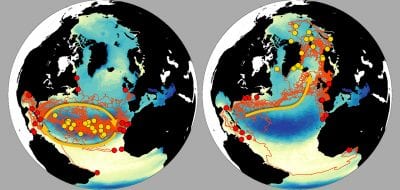
Ocean models are mathematical models of ocean properties and circulation, which helps us to better understand the ocean's influence on…
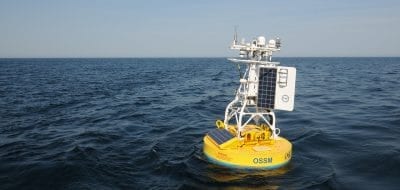
An oceanographic mooring consists of a long cable with an anchor at one end, a float at the other, and…
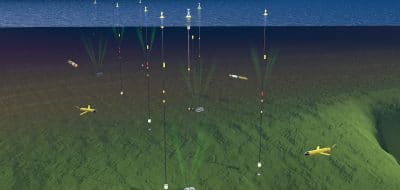
Ocean observatories have suites of instruments and sensors with long-term power supplies and permanent communications links that feed data in…
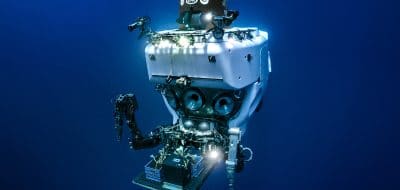
Oceanographic observing tools has grown to include human-occupied submersibles, remote-controlled vehicles, and autonomous robots.
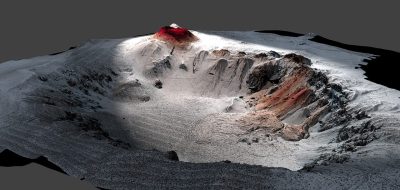
A strong understanding of how sound behaves in different conditions in the ocean helps scientists answer fundamental questions about the…
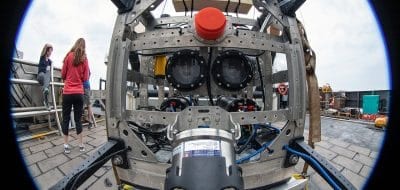
Underwater imaging continues to advance in technology, allowing research to be conducted in the pressure-filled, extreme environments of the ocean.
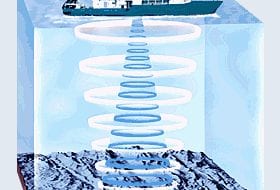
Echo sounding uses sound waves bounced off the ocean bottom to calculate depth. The faster the sound waves return, the…
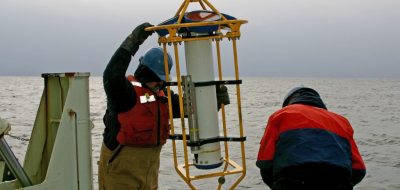
An Acoustic Doppler Current Profiler (ADCP) uses sound waves to measure water current speed at multiple depths, helping scientists study…
Ocean Tech Related Links
Research Vessel Atlantis
One of the most sophisticated research vessels afloat and home to HOV Alvin.
Research Vessel Knorr
Designed to accommodate a wide range of oceanographic tasks.
Research Vessel Tioga
A small, fast boat designed and outfitted for oceanographic work close to shore.
University-National Oceanographic Laboratory System (UNOLS)
A small, fast boat designed and outfitted for oceanographic work close to shore.

